| 성균관대학교 출판부 유학도서
이원국 (지은이),김낙필,이석명,김용수,나우권 (옮긴이)성균관대학교출판부2006-01-10
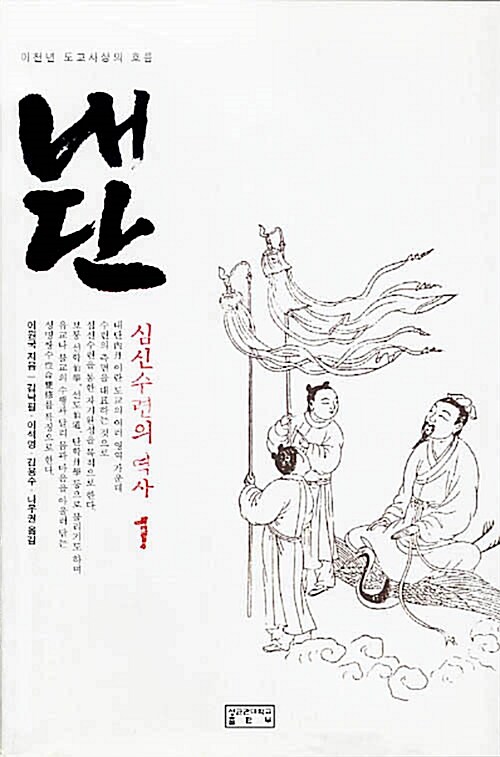
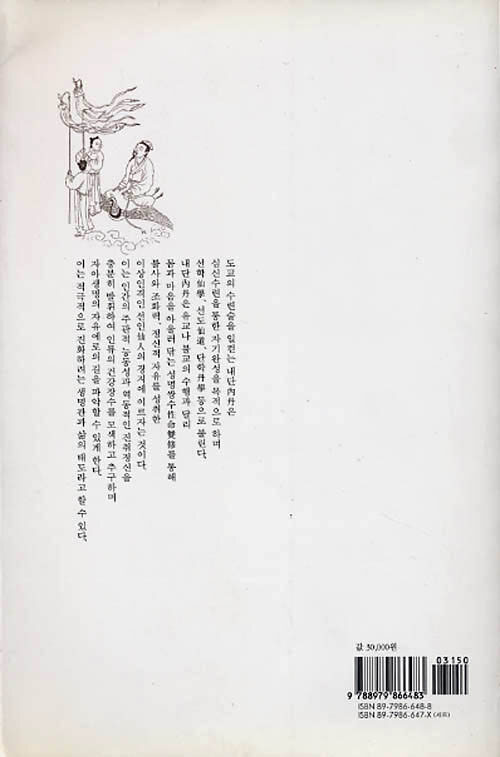


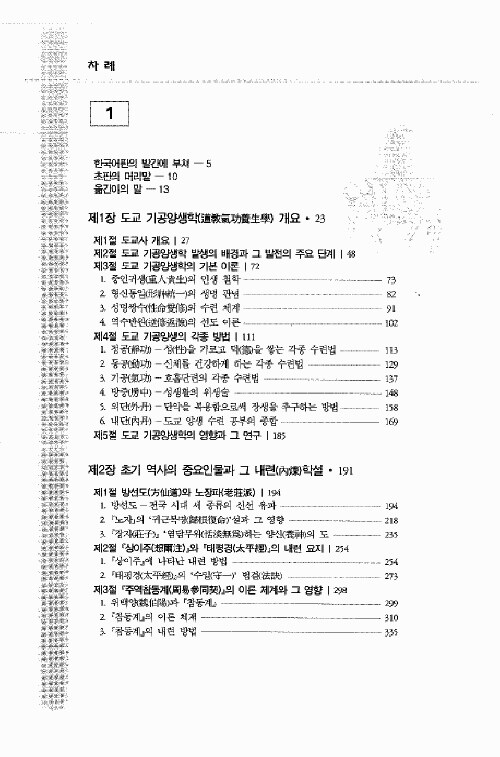





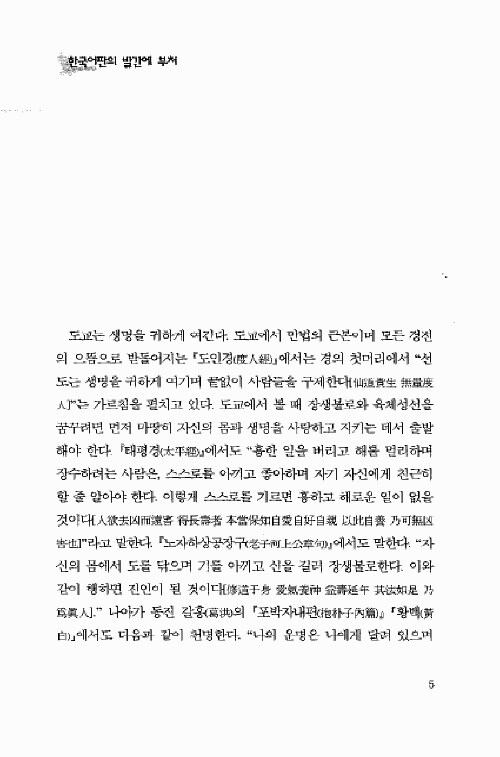




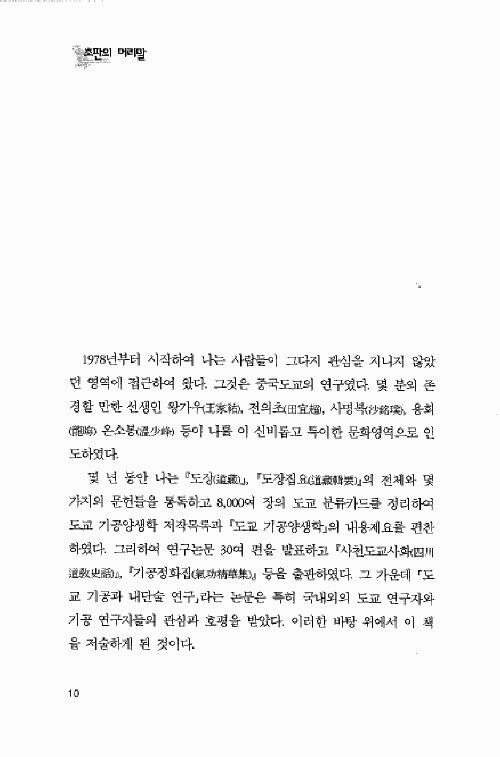
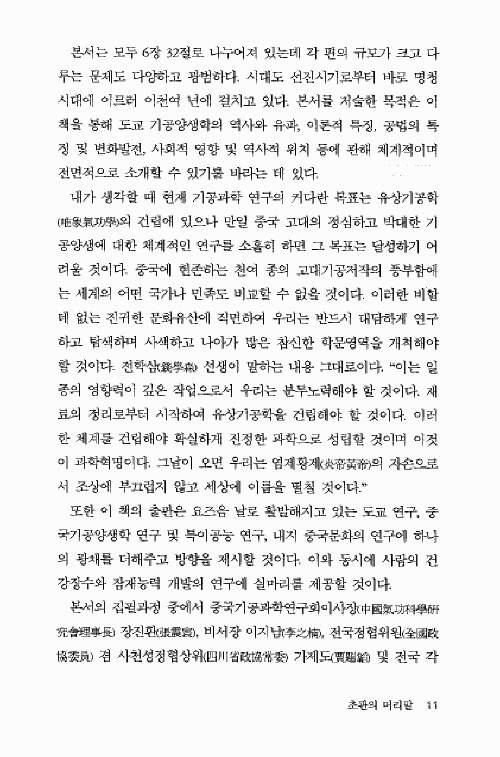
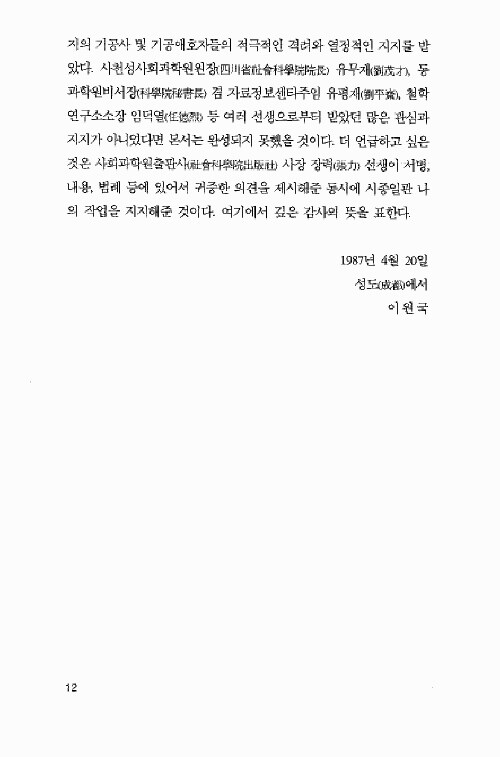



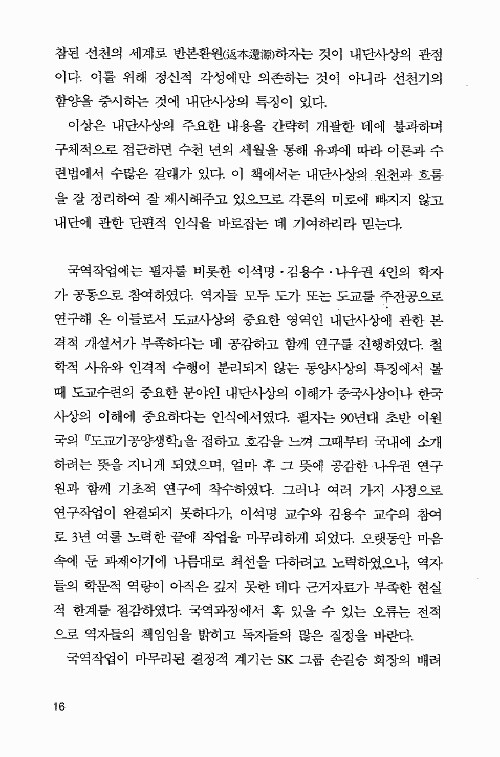




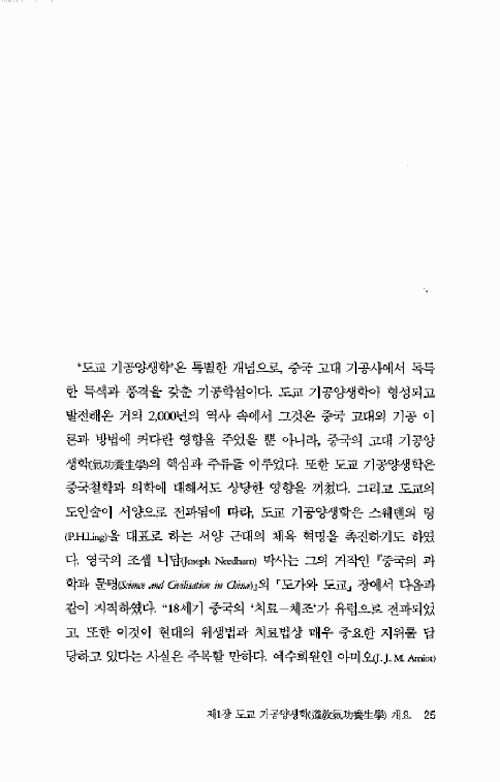


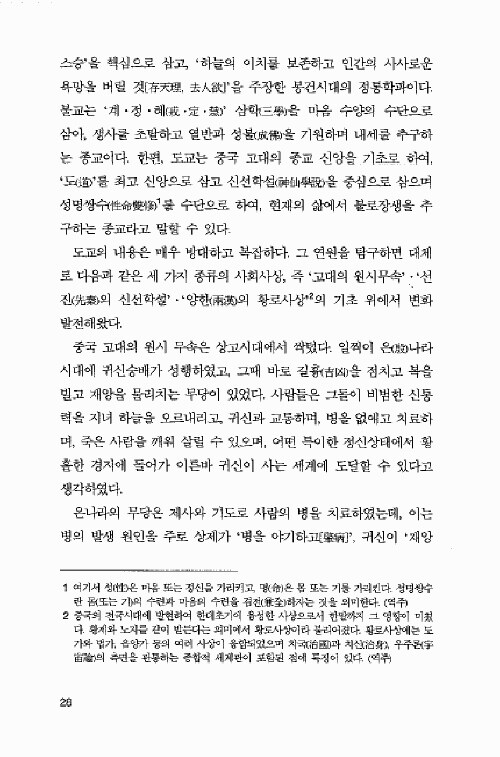

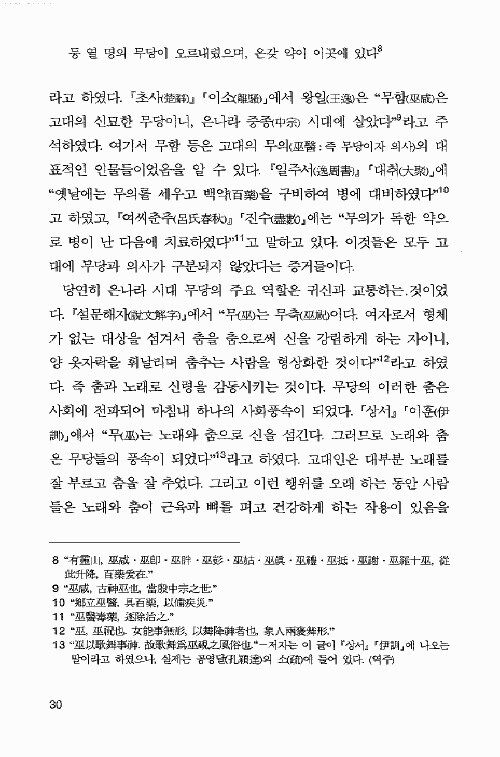



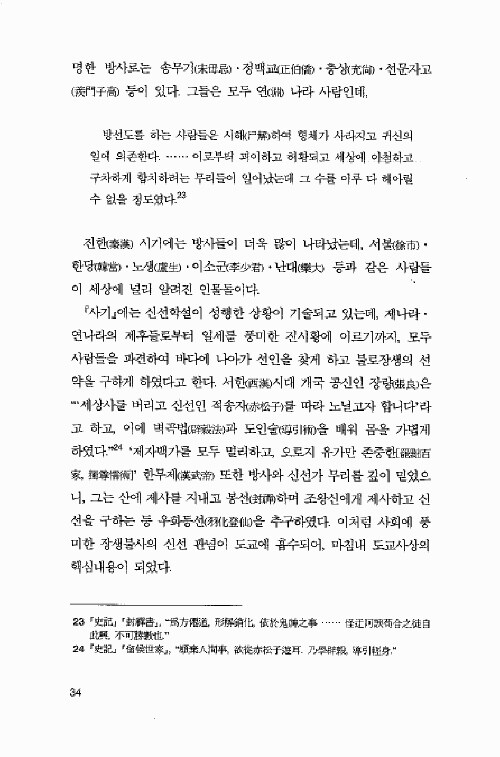
 미리보기
미리보기
정가
30,000원
판매가
28,500원 (5%, 1,500원 할인)
마일리지
1,500원(5%) + 멤버십(3~1%)
+ 5만원이상 구매시 2,000원
배송료
무료
107
양탄자배송
밤 10시까지 주문하면 내일 아침 7시 출근전 배송
(중구 서소문로 89-31 기준) 지역변경
Sales Point : 394
 0.0 100자평(0)리뷰(0)
0.0 100자평(0)리뷰(0)
이 책 어때요?
카드/간편결제 할인
무이자 할부
소득공제 1,290원
스프링 분철
선택안함
스프링 분철 서비스 대상도서입니다.
자세히 보기
수량


장바구니 담기
바로구매
선물하기
보관함 +
전자책 출간알림 신청
중고 등록알림 신청
중고로 팔기

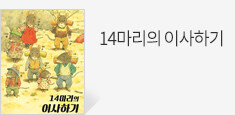



기본정보
749쪽
152*223mm (A5신)
1049g
ISBN : 9788979866483
주제 분류
신간알리미 신청
국내도서 > 대학교재/전문서적 > 인문계열 > 철학
국내도서 > 인문학 > 동양철학 > 도가철학/노장철학 > 도가철학 일반
시리즈
이 책의 전/후속편 (총 2권 모두보기)
신간알리미 신청
전체선택
보관함 담기
장바구니 담기
 내단 1 - 심신수련의 역사
내단 1 - 심신수련의 역사
[품절] 내단 2 - 심신순련의 역사
성균관대학교 출판부 유학도서 (총 64권 모두보기)
신간알리미 신청
전체선택
보관함 담기
장바구니 담기

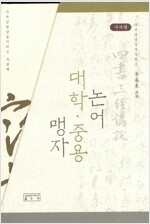 사서삼경강설 사서편 - 전3권
사서삼경강설 사서편 - 전3권
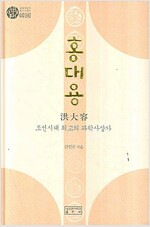 [품절] 홍대용 - 조선시대 최고의 과학사상가
[품절] 홍대용 - 조선시대 최고의 과학사상가

 김종직 : 조선 도학의 분수령
김종직 : 조선 도학의 분수령

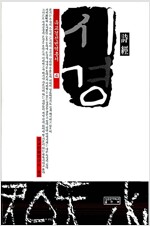 시경
시경

 기정진 - 한말 성리학의 거유
기정진 - 한말 성리학의 거유
더보기
이벤트

수험서.대학교재_북앤드/합격수저세트/데스크 매트
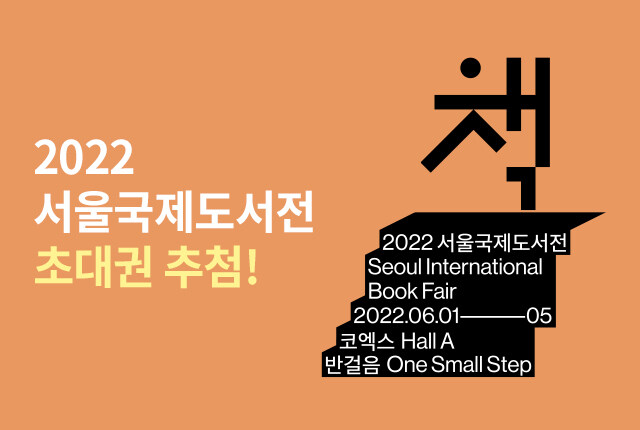
2022 서울 국제도서전에 초대합니다! 초대권 추첨

5월 특별 선물! 책가도, 앙리 루소, 본투리드 티셔츠(이벤트 도서 포함, 국내서.외서 5만원 이상)
알라디너TV - 2022 인문학 라이브 #여성 #20대 #포스트코로나 #장애인권
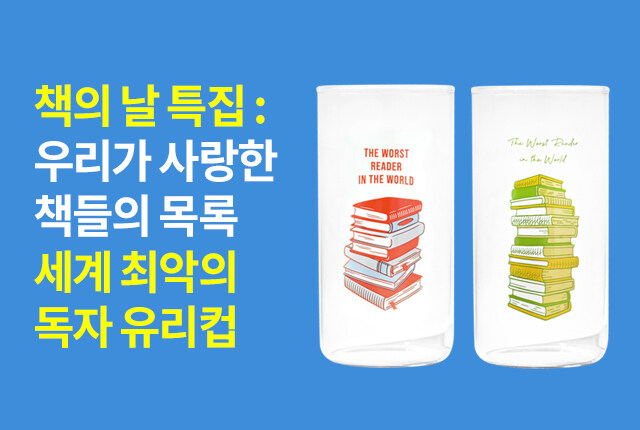
책의 날 특집 : 우리가 사랑한 책들의 목록! '세계 최악의 독자' 유리컵(대상 포함 국내도서 3만원 이상)
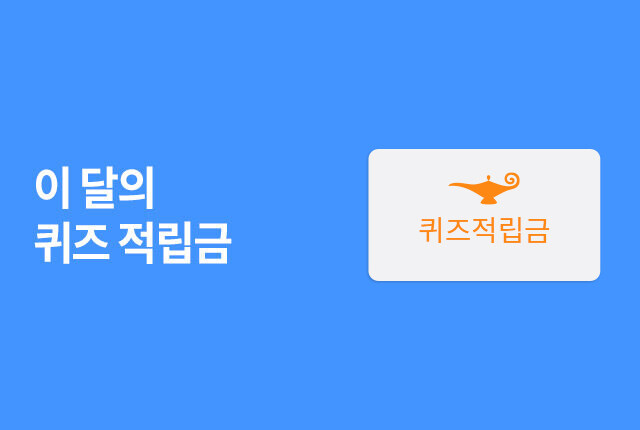
이 달의 적립금 혜택
이 시간, 알라딘 사은품 총집합!
책소개
고대부터 현재에 이르기까지 도교 사상의 핵심이라 할 '내단(內丹)'의 역사를 포괄적이고 충실하게 정리한 중국 도교 사상사의 기록이다. 내단이란 도교의 여러 영역 가운데 수련이 측면을 대표하는 것으로, 몸과 마음을 닦음으로써 정신적 자유를 성취하여 이상인격을 지닌 선인仙人의 경지에 다다른다는 수련술이다.
목차
1권
한국어판 발간에 부쳐
초판의 머리말
옮긴이의 말
제1장 도교 기공양생학 개요
1. 도교사 개요
2. 도교 기공양생학 발생의 배경과 그 발전의 주요 단계
3. 도교 기공양생학의 기본 이론
4. 도교 기공양생의 각종 방법
5. 도교 기공양생학의 영향과 그 연구
제2장 초기 역사의 중요인물과 그 내련학설
1. 방선도와 노장파
2. <상이주>와 <태평경>의 내련 요지
3. <주역참동계>의 이론 체계와 그 영향
4. <포박자내편>
5. <황정경>과 <양성연명록>
제3장 수당오대 시기의 중요인물 및 그들의 내련학설
1. 소원랑과 내단설
2. 장과와 그의 내련사상
3. 손사막의 의학양생
4. 사미승정의 '주정거욕'
5. 최희범 <입약경>의 내단이론
6. 종리권, 여동빈 및 그 내단학설
7. 진박 '구전내단결'의 개념
8. 진단 <무극도>의 단법 및 그 영향
찾아보기
2권
한국어판 발간에 부쳐
초판의 머리말
옮긴이의 말
제4장 양송 시기의 내단파 남종
1. 남종오조와 그 유파
2. 장백단 <오진편>의 내련학설
3. 백옥섬의 <무극도설>과 그의 단법 19결
4. 청수단법과 음양쌍수단법
5. 남종과 북종을 관통하는 진치허의 금단학설
제5장 금원 시기의 내단파 북종
1. 왕중양과 북칠진
2. 북종 단법의 이론적 특징
3. 이도순의 수중치화의 내련학설
4. 왕도연의 성명혼융
제6장 명.청 시기 주요 내단파의 연양 이론
1. 장삼봉의 내련학설 및 그 유파
2. 육서성의 동파와 이서월의 서파
3. 오류파의 단법의 대요
4. 유일명의 역도회통적 내련학설
5. 여자 내단파의 이론과 공법
찾아보기
옮긴의 소개
접기
책소개
이천년 도교사상의 흐름을 살펴보는 <내단, 심신수련의 역사> 제1권. 사천대학 이원국 교수의 이론적 섭렵과 실천적 체험이 녹아 있는『도교기공양생학』을 저본으로 하여 국역한 책이다. 전통적인 심신수련술 중에서 '내단'이라고 하는 도교 사상의 영역 중 하나를 들여다보고 있다.
'내단'이란 도교의 여러 영역 가운데 수련의 측면을 대표하는 것으로, 심신수련을 통한 자기완성을 목적으로 하며 보통 선학, 선도, 단학 등으로 불린다. 몸과 마음을 아울러 닦는 성명쌍수를 통해 불사와 조화력, 정신적 자유를 성취한 이상인격인 선인의 경지에 이르고자 한다.
이 책은 고대로부터 현재에 이르기까지 도교 사상의 핵심이라 할 수 있는 '내단'의 역사를 광범하고 충실하게 기록하였다. 내단사상의 원천과 흐름을 제시하며, 중국 도교 사상사의 총론적 흐름을 일목요연하게 정리하고 있다. 건강과 자기계발, 자아성취, 적극적 삶의 태도 등으로 대표되는 현대인의 삶에 또 하나의 웰빙 방법을 제공하는 책이다.
저자소개
책속에서
도교 기공양생학의 출현은 결코 우연이 아니다. 그것은 선진의 신선사상과 노장 도가의 양생학설을 발전시킨 필연적인 결과이다. 도교가 창립된 것과 마찬가지로, 도교 기공양생학의 발생에도 특수한 역사적 조건이 있다.
도교가 발생한 역사적 배경으로는 주로 동한 후기의 정치적 혼돈과 사회적 혼란을 들 수 있는데, 도교 기공양생학의 등장은 선진과 양한 시대의 과학문화가 발전한 결과이다. - 본문 48쪽에서 접기
저자 및 역자소개
이원국 (지은이)
저자파일
신간알리미 신청
1950년에 중국 사천성 성도에서 태어났다. 2006년 현재 사천성 사회과학원 철학연구소 부소장으로 재직중이다. 지은 책으로 <사천도교사화>, <기공정화록> 등이 있다.
최근작 : <내단 2>,<내단 1> … 총 2종 (모두보기)
김낙필 (옮긴이)
저자파일
신간알리미 신청
1949년 전주에서 태어나 전주고등학교를 거쳐 원광대학교 원불교학과를 졸업하였다.서울대학교 인문대학원 철학과에서 철학박사 학위를 받았다. 인하대학교 철학과 교수, 원광대학교 한국문화학과 교수를 지냈다. 주요 논문으로는 《권극중의 내단사상》 외에 《동의보감의 철학적 기초》 《주역의 도교적 이해》 《황원길의 내단사상》 《도덕경의 내단사상적 해석》 《불사탐구의 이론적 기초》 등이 있다. 저서로 《노장사상과 도교》가 있다.
최근작 : <종교산책>,<조선시대의 내단사상>,<도교와 그리스도교> … 총 8종 (모두보기)
이석명 (옮긴이)
저자파일
신간알리미 신청
강원도 평창의 오대산 자락에 깃든 산골마을에서 태어나 어린 시절 내내 산에 둘러싸여 산을 바라보며 산과 같은 삶을 꿈꾸었다. 중학교 3학년 때 서울로 전학하여 처음으로 도시 생활을 접했다. 이때 새로운 환경에 대한 문화적 충격과 혼돈으로 한동안 비틀거려야 했으며, 그 충격과 혼돈은 어느 순간 철학적 고민으로 이어지게 되었다. 대학은 영문과에 진학했으나, 대학시절 내내 삶의 근본 문제로 고민하며 이리저리 방황하다 결국에는 동양의 자연사상인 노장(老莊)철학에 관심을 갖게 되었다.
대학 졸업 후 경기도 마석 골짜기에 자리 잡은 지곡서당(芝谷書堂)을 찾아들어가 한문공부에 몰두했다. 3년 동안 사서(四書)를 외우고 『시경』 『서경』 『주역』을 공부했으며, 제자백가(諸子百家)의 여러 고전을 살펴보았다. 이때 처음으로 동양고전의 맛을 느꼈고, 그동안 머릿속을 괴롭혀온 삶의 문제들에 대한 답을 조금씩 찾기 시작했다. 동양고전들에 대한 이해가 어느 정도 갖추어진 후 고려대학교 대학원에 진학하여 본격적으로 동양철학 공부를 시작했다. 고(故) 김충열 선생의 지도하에 석사 및 박사과정을 마치고 〈회남자의 무위론 연구〉로 박사학위를 취득하였다.
학위를 마치고 중국으로 건너가 베이징 대학에서 1년 반 동안 박사후 과정을 보내며 새롭게 『노자』 공부의 맛에 빠지게 되었다. 귀국 후에도 『노자』에 대한 공부를 계속해, 노자와 관련된 몇 권의 저술을 낳기도 했다. 그러나 노자 공부만으로는 여전히 채워지지 않는 그 무엇이 있었으며, 그 ‘무엇’은 바로 장자에 있음을 직감하게 되었다. 그래서 요 근래에는 다시 장자 공부에 빠져들고 있다.
고려대학교, 경희대학교, 강원대학교 등에서 강의하였고 강원대학교 연구교수 및 전북대학교 HK교수 등을 역임했다. 현재는 노장(老莊)의 자유로운 삶을 꿈꾸며, 틈틈이 고전번역 저술 및 강의 등으로 시간을 보내고 있다. 쓴 책으로 『노자, 비움과 낮춤의 철학』, 『노자와 황로학』, 『회남자 : 한대(漢代) 지식의 집대성』, 『백서노자』가 있으며 『도덕경』, 『회남자』, 『노자도덕경하상공장구』, 『문자』, 『도가를 찾아가는 과학자들』, 『마음의 문을 여는 삶의 지혜』 등을 옮겼다. 접기
최근작 : <노자>,<장자, 나를 깨우다>,<노자, 비움과 낮춤의 철학> … 총 17종 (모두보기)
김용수 (옮긴이)
저자파일
신간알리미 신청
(현) 경북대학교 사범대학 윤리교육과 교수
(전) 고려대학교 철학연구소 조교수 및 포닥
북경대학교 철학과 박사학위 취득
고려대학교 철학과, 학부, 석사, 박사과정 수료
박사학위논문 「곽상 장학에 대한?연구(郭象莊學之硏究)(중문)-곽상 장자주(莊子注)에 대한 논사병중(論史幷重)적 연구」
저서 및 번역서 『내단: 심신수련의 역사 1』(공역), 성균관대출판부(2006), 『내단: 심신수련의 역사 2』(공역), 성균관대출판부(2006), 『강좌 중국철학』(공역), 예문서원(1992), 『21세기의 동양철학』(공저), 을유문화사(2005), 『새로운 공적 합리성의 모색』(공저), 철학과 현실사(2005), 『동서철학에 나타난 공적 합리성 논쟁』(공저), 철학과 현실사(2005), 『선도의 맥을 찾아서』(역서), 지혜의 나무(2004). 접기
나우권 (옮긴이)
저자파일
신간알리미 신청
고려대학교 철학과를 거쳐 같은 학교 대학원 철학과에서 석사학위를 받았다. 용인대학교 전통문화연구소 연구원을 지냈으며, 2006년 현재 고려대학교 민족문화연구원의 연구원으로 있다. 옮긴 책으로 <주역사건> 등이 있다.
최근작 : <중국과 인도의 신선사상>,<포박자연구> … 총 4종 (모두보기)
이원국(지은이)의 말
본서를 저술한 목적은 이 책을 통해 도교 기공양생학의 역사와 유파, 이론적 특징, 공법의 특징 및 변화발전, 사회적 영향 및 역사적 위치 등에 관해 체계적이며 전면적으로 소개할 수 있기를 바라는 데 있다.
북플 bookple
이 책의 마니아가 남긴 글
친구가 남긴 글
내가 남긴 글
친구가 남긴 글이 아직 없습니다.
마니아
읽고 싶어요 (1)
읽고 있어요 (0)
읽었어요 (1)
이 책 어때요?
구매자
분포

0.5% 10대

0%

3.3% 20대

6.6%

7.1% 30대

23.1%

10.8% 40대

24.5%

5.7% 50대

15.1%

0.5% 60대

2.8%
여성 남성
100자평





등록
카테고리
 스포일러 포함
스포일러 포함
글 작성 유의사항
구매자 (0)
전체 (0)
공감순
등록된 구매자평이 없습니다.
마이리뷰
구매자 (0)
전체 (0)
리뷰쓰기
공감순
등록된 리뷰가 없습니다.
마이페이퍼
전체 (2)
페이퍼 쓰기
좋아요순
[책 오디세이] 에크리 읽기, O-기호의 매춘부, 회남자 외
아주 솜털 같은 미세한 차이지만 더위의 힘이 정점에서 점차 기우는 듯한 느낌이다. 길거리에는 뙤약볕이 햇물 번지듯 이글거리고, 담과 가까이 자란 나무들 밑은 그래도 그림자가 있어 발과 몸을 담그로 더운 열기를 식힐 수 있었다. 오늘도 그러한 여름 하루였다. 브루스 핑크(Bruce Fink)의 <에크리 읽기>가 나왔다. 라캉을 즐겨 읽는 독자들에게는 반가운 소식이다. 물론 브루스 핑크가 번역-편집한 '에크리'나 '세미나'가 우리말로 나오길 바라는 사람들도 많겠지만, 일단 이것만으로도 짧은 단비는 될 것 같다.... + 더보기
TexTan 2007-08-24 공감 (7) 댓글 (0)
Thanks to
공감
찜하기
고대 중국 기의 세계를 다룬 책들 리뷰
정우진의 정기신을 다룬 책들에 많이 인용되기도 했고, 여기 알라딘에서 검색해서 찾아볼 수 있는, 고대 중국의 정신세계를 다룬, 나름 유명한 책들을 정리해본다.
처음 이 책들을 접하고 느낀 공통점은, 저자들이 인용한 한의학과 수행 분야 기술들이 어느 정도 진실을 담은 건지 가늠이 되지 않으면서, 읽어도 쌓이는 게 별로 없이 몇몇 인상적인 문구들만 기억에 남는 정도였다. 계속 낯선 지식들이 나열되면서 소화가 안되니까 금새 지루해지기 십상이었다.
이때 필요한 가늠자가, 정우진의 책들이었고, 어느정도 그 책들을 이해한 후로는, 이들 책들은 흥미진진한 대상으로 바꼈다.
이 책들 중 맨처음은 뭐니뭐니해도 <기 흐르는 신체>다. 이시다 히데미의 이 책을 갖게된지는 오래 되었지만(대략 10년), 읽고 이해할만한 배경지식이 없어서 묵혀두던 책이었다. 이저자가 이 책에서 보여준 문제의식들은, 정우진의 책에도 차용되서 진전된 논의로 보여준 내용들이 많아서 반갑기도 했고, 조금은 다른 시선으로 바라본 점이 흥미롭기도 했다.
그 다음은 <몸으로 본 중국 사상>이다. 이 책은 전설적인 고대 중국 의사들과 그들의 의학을 중심으로 놓고 논의를 펼친다. 그래서 사상사라기보다는 의사중심의 의학사에 가까워 보인다.
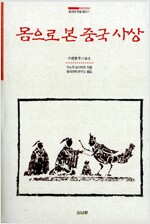
그리고 <내단1>이다. 이 책은 중국인 저자들이 흔히 보이는 글쓰기 경향으로 기술되었다. 즉 풍부한 문헌리뷰 중심의 글쓰기다. 이렇게 쓰면, 다른 책에서 보지 못한 신선한 자료들을 만날 수 있지만, 깊이있거나 신선한 시선을 담기는 좀 어렵다. 그리고 내단 수행에 대한 명확한 이해보다는 참조문헌에 적힌 내용을 전달하는데 그쳐서, 나름의 판단기준을 갖지 못하면 담긴 내용의 가치를 판단하기 쉽지 않다.

다음은 <혈자리서당>이다. 본격적인 한의학지식인 혈자리가 너무 낯설어서 도움을 받고 싶어서 구매한 책이지만, 막상 접했을 때는 이 책을 이해하기 위해 또 다른 도움이 필요할 정도였다. 특히 12경맥에 대한 전체 그림이 잘 그려지지 않아서 힘들었지만, 정우진, 이시다 히데미 책에서 12경맥에 대한 이해가 어느정도 되니까, 이 책에 들인 공이 어떤 영역에서 두드러진 건지 알게되고, 그 맛을 좀 알게 되었다. 쏠쏠한 재미가 있는 편이다.
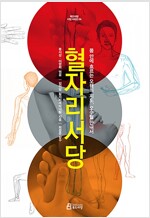
- 접기
마일즈 2022-04-05 공감 (3) 댓글 (0)
Thanks to
공감
찜하기
이 상품을 구입하신 분들이 다음 상품도 구입하셨습니다.
더보기

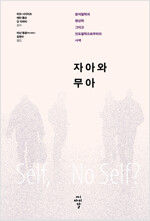 자아와 무아
자아와 무아
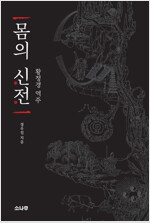 몸의 신전
몸의 신전

내단 2 - 심신순련의 역사
이원국 (지은이),김낙필,이석명,김용수,나우권 (옮긴이)성균관대학교출판부2006-01-10
내단 2
미리보기
정가
27,000원
판매가
25,650원 (5%, 1,350원 할인)
마일리지
1,350원(5%) + 멤버십(3~1%)
+ 5만원이상 구매시 2,000원
배송료
무료
Sales Point : 177
0.0 100자평(0)리뷰(0)
이 책 어때요?
카드/간편결제 할인무이자 할부소득공제 1,160원
품절 출판사/제작사 유통이 중단되어 구할 수 없습니다.
품절
보관함 +
- 품절 확인일 : 2013-10-08
새상품 eBook 중고상품
판매알림 신청 출간알림 신청 중고 등록알림 신청
중고모두보기
중고로 팔기
기본정보
539쪽152*223mm (A5신)755gISBN : 9788979866490
주제 분류
신간알리미 신청
국내도서 > 대학교재/전문서적 > 인문계열 > 철학
국내도서 > 인문학 > 동양철학 > 도가철학/노장철학 > 도가철학 일반
시리즈이 책의 전/후속편 (총 2권 모두보기)
신간알리미 신청
전체선택
보관함 담기
장바구니 담기
내단 1 - 심신수련의 역사
[품절] 내단 2 - 심신순련의 역사
이벤트
수험서.대학교재_북앤드/합격수저세트/데스크 매트
2022 서울 국제도서전에 초대합니다! 초대권 추첨
알라디너TV - 2022 인문학 라이브 #여성 #20대 #포스트코로나 #장애인권
이 달의 적립금 혜택
이 시간, 알라딘 사은품 총집합!
책소개고대부터 현재에 이르기까지 도교 사상의 핵심이라 할 '내단(內丹)'의 역사를 포괄적이고 충실하게 정리한 중국 도교 사상사의 기록이다. 내단이란 도교의 여러 영역 가운데 수련이 측면을 대표하는 것으로, 몸과 마음을 닦음으로써 정신적 자유를 성취하여 이상인격을 지닌 선인仙人의 경지에 다다른다는 수련술이다.
목차
1권
한국어판 발간에 부쳐
초판의 머리말
옮긴이의 말
제1장 도교 기공양생학 개요
1. 도교사 개요
2. 도교 기공양생학 발생의 배경과 그 발전의 주요 단계
3. 도교 기공양생학의 기본 이론
4. 도교 기공양생의 각종 방법
5. 도교 기공양생학의 영향과 그 연구
제2장 초기 역사의 중요인물과 그 내련학설
1. 방선도와 노장파
2. <상이주>와 <태평경>의 내련 요지
3. <주역참동계>의 이론 체계와 그 영향
4. <포박자내편>
5. <황정경>과 <양성연명록>
제3장 수당오대 시기의 중요인물 및 그들의 내련학설
1. 소원랑과 내단설
2. 장과와 그의 내련사상
3. 손사막의 의학양생
4. 사미승정의 '주정거욕'
5. 최희범 <입약경>의 내단이론
6. 종리권, 여동빈 및 그 내단학설
7. 진박 '구전내단결'의 개념
8. 진단 <무극도>의 단법 및 그 영향
찾아보기
2권
한국어판 발간에 부쳐
초판의 머리말
옮긴이의 말
제4장 양송 시기의 내단파 남종
1. 남종오조와 그 유파
2. 장백단 <오진편>의 내련학설
3. 백옥섬의 <무극도설>과 그의 단법 19결
4. 청수단법과 음양쌍수단법
5. 남종과 북종을 관통하는 진치허의 금단학설
제5장 금원 시기의 내단파 북종
1. 왕중양과 북칠진
2. 북종 단법의 이론적 특징
3. 이도순의 수중치화의 내련학설
4. 왕도연의 성명혼융
제6장 명.청 시기 주요 내단파의 연양 이론
1. 장삼봉의 내련학설 및 그 유파
2. 육서성의 동파와 이서월의 서파
3. 오류파의 단법의 대요
4. 유일명의 역도회통적 내련학설
5. 여자 내단파의 이론과 공법
찾아보기
옮긴의 소개
접기
책속에서
도교 기공양생학의 출현은 결코 우연이 아니다. 그것은 선진의 신선사상과 노장 도가의 양생학설을 발전시킨 필연적인 결과이다. 도교가 창립된 것과 마찬가지로, 도교 기공양생학의 발생에도 특수한 역사적 조건이 있다.
도교가 발생한 역사적 배경으로는 주로 동한 후기의 정치적 혼돈과 사회적 혼란을 들 수 있는데, 도교 기공양생학의 등장은 선진과 양한 시대의 과학문화가 발전한 결과이다. - 본문 48쪽에서 접기
저자 및 역자소개
이원국 (지은이)
저자파일
신간알리미 신청
1950년에 중국 사천성 성도에서 태어났다. 2006년 현재 사천성 사회과학원 철학연구소 부소장으로 재직중이다. 지은 책으로 <사천도교사화>, <기공정화록> 등이 있다.
최근작 : <내단 2>,<내단 1> … 총 2종 (모두보기)
김낙필 (옮긴이)
저자파일
신간알리미 신청
1949년 전주에서 태어나 전주고등학교를 거쳐 원광대학교 원불교학과를 졸업하였다.서울대학교 인문대학원 철학과에서 철학박사 학위를 받았다. 인하대학교 철학과 교수, 원광대학교 한국문화학과 교수를 지냈다. 주요 논문으로는 《권극중의 내단사상》 외에 《동의보감의 철학적 기초》 《주역의 도교적 이해》 《황원길의 내단사상》 《도덕경의 내단사상적 해석》 《불사탐구의 이론적 기초》 등이 있다. 저서로 《노장사상과 도교》가 있다.
최근작 : <종교산책>,<조선시대의 내단사상>,<도교와 그리스도교> … 총 8종 (모두보기)
이석명 (옮긴이)
저자파일
신간알리미 신청
강원도 평창의 오대산 자락에 깃든 산골마을에서 태어나 어린 시절 내내 산에 둘러싸여 산을 바라보며 산과 같은 삶을 꿈꾸었다. 중학교 3학년 때 서울로 전학하여 처음으로 도시 생활을 접했다. 이때 새로운 환경에 대한 문화적 충격과 혼돈으로 한동안 비틀거려야 했으며, 그 충격과 혼돈은 어느 순간 철학적 고민으로 이어지게 되었다. 대학은 영문과에 진학했으나, 대학시절 내내 삶의 근본 문제로 고민하며 이리저리 방황하다 결국에는 동양의 자연사상인 노장(老莊)철학에 관심을 갖게 되었다.
대학 졸업 후 경기도 마석 골짜기에 자리 잡은 지곡서당(芝谷書堂)을 찾아들어가 한문공부에 몰두했다. 3년 동안 사서(四書)를 외우고 『시경』 『서경』 『주역』을 공부했으며, 제자백가(諸子百家)의 여러 고전을 살펴보았다. 이때 처음으로 동양고전의 맛을 느꼈고, 그동안 머릿속을 괴롭혀온 삶의 문제들에 대한 답을 조금씩 찾기 시작했다. 동양고전들에 대한 이해가 어느 정도 갖추어진 후 고려대학교 대학원에 진학하여 본격적으로 동양철학 공부를 시작했다. 고(故) 김충열 선생의 지도하에 석사 및 박사과정을 마치고 〈회남자의 무위론 연구〉로 박사학위를 취득하였다.
학위를 마치고 중국으로 건너가 베이징 대학에서 1년 반 동안 박사후 과정을 보내며 새롭게 『노자』 공부의 맛에 빠지게 되었다. 귀국 후에도 『노자』에 대한 공부를 계속해, 노자와 관련된 몇 권의 저술을 낳기도 했다. 그러나 노자 공부만으로는 여전히 채워지지 않는 그 무엇이 있었으며, 그 ‘무엇’은 바로 장자에 있음을 직감하게 되었다. 그래서 요 근래에는 다시 장자 공부에 빠져들고 있다.
고려대학교, 경희대학교, 강원대학교 등에서 강의하였고 강원대학교 연구교수 및 전북대학교 HK교수 등을 역임했다. 현재는 노장(老莊)의 자유로운 삶을 꿈꾸며, 틈틈이 고전번역 저술 및 강의 등으로 시간을 보내고 있다. 쓴 책으로 『노자, 비움과 낮춤의 철학』, 『노자와 황로학』, 『회남자 : 한대(漢代) 지식의 집대성』, 『백서노자』가 있으며 『도덕경』, 『회남자』, 『노자도덕경하상공장구』, 『문자』, 『도가를 찾아가는 과학자들』, 『마음의 문을 여는 삶의 지혜』 등을 옮겼다. 접기
최근작 : <노자>,<장자, 나를 깨우다>,<노자, 비움과 낮춤의 철학> … 총 17종 (모두보기)
김용수 (옮긴이)
저자파일
신간알리미 신청
(현) 경북대학교 사범대학 윤리교육과 교수
(전) 고려대학교 철학연구소 조교수 및 포닥
북경대학교 철학과 박사학위 취득
고려대학교 철학과, 학부, 석사, 박사과정 수료
박사학위논문 「곽상 장학에 대한?연구(郭象莊學之硏究)(중문)-곽상 장자주(莊子注)에 대한 논사병중(論史幷重)적 연구」
저서 및 번역서 『내단: 심신수련의 역사 1』(공역), 성균관대출판부(2006), 『내단: 심신수련의 역사 2』(공역), 성균관대출판부(2006), 『강좌 중국철학』(공역), 예문서원(1992), 『21세기의 동양철학』(공저), 을유문화사(2005), 『새로운 공적 합리성의 모색』(공저), 철학과 현실사(2005), 『동서철학에 나타난 공적 합리성 논쟁』(공저), 철학과 현실사(2005), 『선도의 맥을 찾아서』(역서), 지혜의 나무(2004). 접기
나우권 (옮긴이)
저자파일
신간알리미 신청
고려대학교 철학과를 거쳐 같은 학교 대학원 철학과에서 석사학위를 받았다. 용인대학교 전통문화연구소 연구원을 지냈으며, 2006년 현재 고려대학교 민족문화연구원의 연구원으로 있다. 옮긴 책으로 <주역사건> 등이 있다.
최근작 : <중국과 인도의 신선사상>,<포박자연구> … 총 4종 (모두보기)
이원국(지은이)의 말
본서를 저술한 목적은 이 책을 통해 도교 기공양생학의 역사와 유파, 이론적 특징, 공법의 특징 및 변화발전, 사회적 영향 및 역사적 위치 등에 관해 체계적이며 전면적으로 소개할 수 있기를 바라는 데 있다.
이원국 (지은이),김낙필,이석명,김용수,나우권 (옮긴이)성균관대학교출판부2006-01-10






































정가
30,000원
판매가
28,500원 (5%, 1,500원 할인)
마일리지
1,500원(5%) + 멤버십(3~1%)
+ 5만원이상 구매시 2,000원

배송료
무료

107
양탄자배송
밤 10시까지 주문하면 내일 아침 7시 출근전 배송
(중구 서소문로 89-31 기준) 지역변경
Sales Point : 394

이 책 어때요?
카드/간편결제 할인

무이자 할부

소득공제 1,290원

스프링 분철
선택안함
스프링 분철 서비스 대상도서입니다.
자세히 보기
수량
장바구니 담기
바로구매
선물하기
보관함 +
전자책 출간알림 신청

중고 등록알림 신청

중고로 팔기






기본정보
749쪽
152*223mm (A5신)
1049g
ISBN : 9788979866483
주제 분류
신간알리미 신청
국내도서 > 대학교재/전문서적 > 인문계열 > 철학
국내도서 > 인문학 > 동양철학 > 도가철학/노장철학 > 도가철학 일반
시리즈
이 책의 전/후속편 (총 2권 모두보기)
신간알리미 신청
전체선택
보관함 담기
장바구니 담기
[품절] 내단 2 - 심신순련의 역사
성균관대학교 출판부 유학도서 (총 64권 모두보기)
신간알리미 신청
전체선택
보관함 담기
장바구니 담기
 사서삼경강설 사서편 - 전3권
사서삼경강설 사서편 - 전3권 [품절] 홍대용 - 조선시대 최고의 과학사상가
[품절] 홍대용 - 조선시대 최고의 과학사상가 김종직 : 조선 도학의 분수령
김종직 : 조선 도학의 분수령 시경
시경 기정진 - 한말 성리학의 거유
기정진 - 한말 성리학의 거유더보기
이벤트

수험서.대학교재_북앤드/합격수저세트/데스크 매트

2022 서울 국제도서전에 초대합니다! 초대권 추첨

5월 특별 선물! 책가도, 앙리 루소, 본투리드 티셔츠(이벤트 도서 포함, 국내서.외서 5만원 이상)

알라디너TV - 2022 인문학 라이브 #여성 #20대 #포스트코로나 #장애인권

책의 날 특집 : 우리가 사랑한 책들의 목록! '세계 최악의 독자' 유리컵(대상 포함 국내도서 3만원 이상)

이 달의 적립금 혜택

이 시간, 알라딘 사은품 총집합!
책소개
고대부터 현재에 이르기까지 도교 사상의 핵심이라 할 '내단(內丹)'의 역사를 포괄적이고 충실하게 정리한 중국 도교 사상사의 기록이다. 내단이란 도교의 여러 영역 가운데 수련이 측면을 대표하는 것으로, 몸과 마음을 닦음으로써 정신적 자유를 성취하여 이상인격을 지닌 선인仙人의 경지에 다다른다는 수련술이다.
목차
1권
한국어판 발간에 부쳐
초판의 머리말
옮긴이의 말
제1장 도교 기공양생학 개요
1. 도교사 개요
2. 도교 기공양생학 발생의 배경과 그 발전의 주요 단계
3. 도교 기공양생학의 기본 이론
4. 도교 기공양생의 각종 방법
5. 도교 기공양생학의 영향과 그 연구
제2장 초기 역사의 중요인물과 그 내련학설
1. 방선도와 노장파
2. <상이주>와 <태평경>의 내련 요지
3. <주역참동계>의 이론 체계와 그 영향
4. <포박자내편>
5. <황정경>과 <양성연명록>
제3장 수당오대 시기의 중요인물 및 그들의 내련학설
1. 소원랑과 내단설
2. 장과와 그의 내련사상
3. 손사막의 의학양생
4. 사미승정의 '주정거욕'
5. 최희범 <입약경>의 내단이론
6. 종리권, 여동빈 및 그 내단학설
7. 진박 '구전내단결'의 개념
8. 진단 <무극도>의 단법 및 그 영향
찾아보기
2권
한국어판 발간에 부쳐
초판의 머리말
옮긴이의 말
제4장 양송 시기의 내단파 남종
1. 남종오조와 그 유파
2. 장백단 <오진편>의 내련학설
3. 백옥섬의 <무극도설>과 그의 단법 19결
4. 청수단법과 음양쌍수단법
5. 남종과 북종을 관통하는 진치허의 금단학설
제5장 금원 시기의 내단파 북종
1. 왕중양과 북칠진
2. 북종 단법의 이론적 특징
3. 이도순의 수중치화의 내련학설
4. 왕도연의 성명혼융
제6장 명.청 시기 주요 내단파의 연양 이론
1. 장삼봉의 내련학설 및 그 유파
2. 육서성의 동파와 이서월의 서파
3. 오류파의 단법의 대요
4. 유일명의 역도회통적 내련학설
5. 여자 내단파의 이론과 공법
찾아보기
옮긴의 소개
접기
책소개
이천년 도교사상의 흐름을 살펴보는 <내단, 심신수련의 역사> 제1권. 사천대학 이원국 교수의 이론적 섭렵과 실천적 체험이 녹아 있는『도교기공양생학』을 저본으로 하여 국역한 책이다. 전통적인 심신수련술 중에서 '내단'이라고 하는 도교 사상의 영역 중 하나를 들여다보고 있다.
'내단'이란 도교의 여러 영역 가운데 수련의 측면을 대표하는 것으로, 심신수련을 통한 자기완성을 목적으로 하며 보통 선학, 선도, 단학 등으로 불린다. 몸과 마음을 아울러 닦는 성명쌍수를 통해 불사와 조화력, 정신적 자유를 성취한 이상인격인 선인의 경지에 이르고자 한다.
이 책은 고대로부터 현재에 이르기까지 도교 사상의 핵심이라 할 수 있는 '내단'의 역사를 광범하고 충실하게 기록하였다. 내단사상의 원천과 흐름을 제시하며, 중국 도교 사상사의 총론적 흐름을 일목요연하게 정리하고 있다. 건강과 자기계발, 자아성취, 적극적 삶의 태도 등으로 대표되는 현대인의 삶에 또 하나의 웰빙 방법을 제공하는 책이다.
저자소개
책속에서
도교 기공양생학의 출현은 결코 우연이 아니다. 그것은 선진의 신선사상과 노장 도가의 양생학설을 발전시킨 필연적인 결과이다. 도교가 창립된 것과 마찬가지로, 도교 기공양생학의 발생에도 특수한 역사적 조건이 있다.
도교가 발생한 역사적 배경으로는 주로 동한 후기의 정치적 혼돈과 사회적 혼란을 들 수 있는데, 도교 기공양생학의 등장은 선진과 양한 시대의 과학문화가 발전한 결과이다. - 본문 48쪽에서 접기
저자 및 역자소개
이원국 (지은이)
저자파일
신간알리미 신청
1950년에 중국 사천성 성도에서 태어났다. 2006년 현재 사천성 사회과학원 철학연구소 부소장으로 재직중이다. 지은 책으로 <사천도교사화>, <기공정화록> 등이 있다.
최근작 : <내단 2>,<내단 1> … 총 2종 (모두보기)
김낙필 (옮긴이)
저자파일
신간알리미 신청
1949년 전주에서 태어나 전주고등학교를 거쳐 원광대학교 원불교학과를 졸업하였다.서울대학교 인문대학원 철학과에서 철학박사 학위를 받았다. 인하대학교 철학과 교수, 원광대학교 한국문화학과 교수를 지냈다. 주요 논문으로는 《권극중의 내단사상》 외에 《동의보감의 철학적 기초》 《주역의 도교적 이해》 《황원길의 내단사상》 《도덕경의 내단사상적 해석》 《불사탐구의 이론적 기초》 등이 있다. 저서로 《노장사상과 도교》가 있다.
최근작 : <종교산책>,<조선시대의 내단사상>,<도교와 그리스도교> … 총 8종 (모두보기)
이석명 (옮긴이)
저자파일
신간알리미 신청
강원도 평창의 오대산 자락에 깃든 산골마을에서 태어나 어린 시절 내내 산에 둘러싸여 산을 바라보며 산과 같은 삶을 꿈꾸었다. 중학교 3학년 때 서울로 전학하여 처음으로 도시 생활을 접했다. 이때 새로운 환경에 대한 문화적 충격과 혼돈으로 한동안 비틀거려야 했으며, 그 충격과 혼돈은 어느 순간 철학적 고민으로 이어지게 되었다. 대학은 영문과에 진학했으나, 대학시절 내내 삶의 근본 문제로 고민하며 이리저리 방황하다 결국에는 동양의 자연사상인 노장(老莊)철학에 관심을 갖게 되었다.
대학 졸업 후 경기도 마석 골짜기에 자리 잡은 지곡서당(芝谷書堂)을 찾아들어가 한문공부에 몰두했다. 3년 동안 사서(四書)를 외우고 『시경』 『서경』 『주역』을 공부했으며, 제자백가(諸子百家)의 여러 고전을 살펴보았다. 이때 처음으로 동양고전의 맛을 느꼈고, 그동안 머릿속을 괴롭혀온 삶의 문제들에 대한 답을 조금씩 찾기 시작했다. 동양고전들에 대한 이해가 어느 정도 갖추어진 후 고려대학교 대학원에 진학하여 본격적으로 동양철학 공부를 시작했다. 고(故) 김충열 선생의 지도하에 석사 및 박사과정을 마치고 〈회남자의 무위론 연구〉로 박사학위를 취득하였다.
학위를 마치고 중국으로 건너가 베이징 대학에서 1년 반 동안 박사후 과정을 보내며 새롭게 『노자』 공부의 맛에 빠지게 되었다. 귀국 후에도 『노자』에 대한 공부를 계속해, 노자와 관련된 몇 권의 저술을 낳기도 했다. 그러나 노자 공부만으로는 여전히 채워지지 않는 그 무엇이 있었으며, 그 ‘무엇’은 바로 장자에 있음을 직감하게 되었다. 그래서 요 근래에는 다시 장자 공부에 빠져들고 있다.
고려대학교, 경희대학교, 강원대학교 등에서 강의하였고 강원대학교 연구교수 및 전북대학교 HK교수 등을 역임했다. 현재는 노장(老莊)의 자유로운 삶을 꿈꾸며, 틈틈이 고전번역 저술 및 강의 등으로 시간을 보내고 있다. 쓴 책으로 『노자, 비움과 낮춤의 철학』, 『노자와 황로학』, 『회남자 : 한대(漢代) 지식의 집대성』, 『백서노자』가 있으며 『도덕경』, 『회남자』, 『노자도덕경하상공장구』, 『문자』, 『도가를 찾아가는 과학자들』, 『마음의 문을 여는 삶의 지혜』 등을 옮겼다. 접기
최근작 : <노자>,<장자, 나를 깨우다>,<노자, 비움과 낮춤의 철학> … 총 17종 (모두보기)
김용수 (옮긴이)
저자파일
신간알리미 신청
(현) 경북대학교 사범대학 윤리교육과 교수
(전) 고려대학교 철학연구소 조교수 및 포닥
북경대학교 철학과 박사학위 취득
고려대학교 철학과, 학부, 석사, 박사과정 수료
박사학위논문 「곽상 장학에 대한?연구(郭象莊學之硏究)(중문)-곽상 장자주(莊子注)에 대한 논사병중(論史幷重)적 연구」
저서 및 번역서 『내단: 심신수련의 역사 1』(공역), 성균관대출판부(2006), 『내단: 심신수련의 역사 2』(공역), 성균관대출판부(2006), 『강좌 중국철학』(공역), 예문서원(1992), 『21세기의 동양철학』(공저), 을유문화사(2005), 『새로운 공적 합리성의 모색』(공저), 철학과 현실사(2005), 『동서철학에 나타난 공적 합리성 논쟁』(공저), 철학과 현실사(2005), 『선도의 맥을 찾아서』(역서), 지혜의 나무(2004). 접기
나우권 (옮긴이)
저자파일
신간알리미 신청
고려대학교 철학과를 거쳐 같은 학교 대학원 철학과에서 석사학위를 받았다. 용인대학교 전통문화연구소 연구원을 지냈으며, 2006년 현재 고려대학교 민족문화연구원의 연구원으로 있다. 옮긴 책으로 <주역사건> 등이 있다.
최근작 : <중국과 인도의 신선사상>,<포박자연구> … 총 4종 (모두보기)
이원국(지은이)의 말
본서를 저술한 목적은 이 책을 통해 도교 기공양생학의 역사와 유파, 이론적 특징, 공법의 특징 및 변화발전, 사회적 영향 및 역사적 위치 등에 관해 체계적이며 전면적으로 소개할 수 있기를 바라는 데 있다.
북플 bookple
이 책의 마니아가 남긴 글
친구가 남긴 글
내가 남긴 글
친구가 남긴 글이 아직 없습니다.
마니아
읽고 싶어요 (1)
읽고 있어요 (0)
읽었어요 (1)
이 책 어때요?
구매자
분포

0.5% 10대

0%

3.3% 20대

6.6%

7.1% 30대

23.1%

10.8% 40대

24.5%

5.7% 50대

15.1%

0.5% 60대

2.8%
여성 남성
100자평
등록
카테고리
글 작성 유의사항
구매자 (0)
전체 (0)
공감순

등록된 구매자평이 없습니다.
마이리뷰
구매자 (0)
전체 (0)
리뷰쓰기
공감순

등록된 리뷰가 없습니다.
마이페이퍼
전체 (2)
페이퍼 쓰기
좋아요순

[책 오디세이] 에크리 읽기, O-기호의 매춘부, 회남자 외
아주 솜털 같은 미세한 차이지만 더위의 힘이 정점에서 점차 기우는 듯한 느낌이다. 길거리에는 뙤약볕이 햇물 번지듯 이글거리고, 담과 가까이 자란 나무들 밑은 그래도 그림자가 있어 발과 몸을 담그로 더운 열기를 식힐 수 있었다. 오늘도 그러한 여름 하루였다. 브루스 핑크(Bruce Fink)의 <에크리 읽기>가 나왔다. 라캉을 즐겨 읽는 독자들에게는 반가운 소식이다. 물론 브루스 핑크가 번역-편집한 '에크리'나 '세미나'가 우리말로 나오길 바라는 사람들도 많겠지만, 일단 이것만으로도 짧은 단비는 될 것 같다.... + 더보기
TexTan 2007-08-24 공감 (7) 댓글 (0)
Thanks to
공감
찜하기
고대 중국 기의 세계를 다룬 책들 리뷰
정우진의 정기신을 다룬 책들에 많이 인용되기도 했고, 여기 알라딘에서 검색해서 찾아볼 수 있는, 고대 중국의 정신세계를 다룬, 나름 유명한 책들을 정리해본다.
처음 이 책들을 접하고 느낀 공통점은, 저자들이 인용한 한의학과 수행 분야 기술들이 어느 정도 진실을 담은 건지 가늠이 되지 않으면서, 읽어도 쌓이는 게 별로 없이 몇몇 인상적인 문구들만 기억에 남는 정도였다. 계속 낯선 지식들이 나열되면서 소화가 안되니까 금새 지루해지기 십상이었다.
이때 필요한 가늠자가, 정우진의 책들이었고, 어느정도 그 책들을 이해한 후로는, 이들 책들은 흥미진진한 대상으로 바꼈다.
이 책들 중 맨처음은 뭐니뭐니해도 <기 흐르는 신체>다. 이시다 히데미의 이 책을 갖게된지는 오래 되었지만(대략 10년), 읽고 이해할만한 배경지식이 없어서 묵혀두던 책이었다. 이저자가 이 책에서 보여준 문제의식들은, 정우진의 책에도 차용되서 진전된 논의로 보여준 내용들이 많아서 반갑기도 했고, 조금은 다른 시선으로 바라본 점이 흥미롭기도 했다.
그 다음은 <몸으로 본 중국 사상>이다. 이 책은 전설적인 고대 중국 의사들과 그들의 의학을 중심으로 놓고 논의를 펼친다. 그래서 사상사라기보다는 의사중심의 의학사에 가까워 보인다.

그리고 <내단1>이다. 이 책은 중국인 저자들이 흔히 보이는 글쓰기 경향으로 기술되었다. 즉 풍부한 문헌리뷰 중심의 글쓰기다. 이렇게 쓰면, 다른 책에서 보지 못한 신선한 자료들을 만날 수 있지만, 깊이있거나 신선한 시선을 담기는 좀 어렵다. 그리고 내단 수행에 대한 명확한 이해보다는 참조문헌에 적힌 내용을 전달하는데 그쳐서, 나름의 판단기준을 갖지 못하면 담긴 내용의 가치를 판단하기 쉽지 않다.

다음은 <혈자리서당>이다. 본격적인 한의학지식인 혈자리가 너무 낯설어서 도움을 받고 싶어서 구매한 책이지만, 막상 접했을 때는 이 책을 이해하기 위해 또 다른 도움이 필요할 정도였다. 특히 12경맥에 대한 전체 그림이 잘 그려지지 않아서 힘들었지만, 정우진, 이시다 히데미 책에서 12경맥에 대한 이해가 어느정도 되니까, 이 책에 들인 공이 어떤 영역에서 두드러진 건지 알게되고, 그 맛을 좀 알게 되었다. 쏠쏠한 재미가 있는 편이다.

- 접기
마일즈 2022-04-05 공감 (3) 댓글 (0)
Thanks to
공감
찜하기
이 상품을 구입하신 분들이 다음 상품도 구입하셨습니다.
더보기
 자아와 무아
자아와 무아 몸의 신전
몸의 신전내단 2 - 심신순련의 역사
이원국 (지은이),김낙필,이석명,김용수,나우권 (옮긴이)성균관대학교출판부2006-01-10
내단 2
미리보기
정가
27,000원
판매가
25,650원 (5%, 1,350원 할인)
마일리지
1,350원(5%) + 멤버십(3~1%)
+ 5만원이상 구매시 2,000원
배송료
무료
Sales Point : 177
0.0 100자평(0)리뷰(0)
이 책 어때요?
카드/간편결제 할인무이자 할부소득공제 1,160원
품절 출판사/제작사 유통이 중단되어 구할 수 없습니다.
품절
보관함 +
- 품절 확인일 : 2013-10-08
새상품 eBook 중고상품
판매알림 신청 출간알림 신청 중고 등록알림 신청
중고모두보기
중고로 팔기
기본정보
539쪽152*223mm (A5신)755gISBN : 9788979866490
주제 분류
신간알리미 신청
국내도서 > 대학교재/전문서적 > 인문계열 > 철학
국내도서 > 인문학 > 동양철학 > 도가철학/노장철학 > 도가철학 일반
시리즈이 책의 전/후속편 (총 2권 모두보기)
신간알리미 신청
전체선택
보관함 담기
장바구니 담기
내단 1 - 심신수련의 역사
[품절] 내단 2 - 심신순련의 역사
이벤트
수험서.대학교재_북앤드/합격수저세트/데스크 매트
2022 서울 국제도서전에 초대합니다! 초대권 추첨
알라디너TV - 2022 인문학 라이브 #여성 #20대 #포스트코로나 #장애인권
이 달의 적립금 혜택
이 시간, 알라딘 사은품 총집합!
책소개고대부터 현재에 이르기까지 도교 사상의 핵심이라 할 '내단(內丹)'의 역사를 포괄적이고 충실하게 정리한 중국 도교 사상사의 기록이다. 내단이란 도교의 여러 영역 가운데 수련이 측면을 대표하는 것으로, 몸과 마음을 닦음으로써 정신적 자유를 성취하여 이상인격을 지닌 선인仙人의 경지에 다다른다는 수련술이다.
목차
1권
한국어판 발간에 부쳐
초판의 머리말
옮긴이의 말
제1장 도교 기공양생학 개요
1. 도교사 개요
2. 도교 기공양생학 발생의 배경과 그 발전의 주요 단계
3. 도교 기공양생학의 기본 이론
4. 도교 기공양생의 각종 방법
5. 도교 기공양생학의 영향과 그 연구
제2장 초기 역사의 중요인물과 그 내련학설
1. 방선도와 노장파
2. <상이주>와 <태평경>의 내련 요지
3. <주역참동계>의 이론 체계와 그 영향
4. <포박자내편>
5. <황정경>과 <양성연명록>
제3장 수당오대 시기의 중요인물 및 그들의 내련학설
1. 소원랑과 내단설
2. 장과와 그의 내련사상
3. 손사막의 의학양생
4. 사미승정의 '주정거욕'
5. 최희범 <입약경>의 내단이론
6. 종리권, 여동빈 및 그 내단학설
7. 진박 '구전내단결'의 개념
8. 진단 <무극도>의 단법 및 그 영향
찾아보기
2권
한국어판 발간에 부쳐
초판의 머리말
옮긴이의 말
제4장 양송 시기의 내단파 남종
1. 남종오조와 그 유파
2. 장백단 <오진편>의 내련학설
3. 백옥섬의 <무극도설>과 그의 단법 19결
4. 청수단법과 음양쌍수단법
5. 남종과 북종을 관통하는 진치허의 금단학설
제5장 금원 시기의 내단파 북종
1. 왕중양과 북칠진
2. 북종 단법의 이론적 특징
3. 이도순의 수중치화의 내련학설
4. 왕도연의 성명혼융
제6장 명.청 시기 주요 내단파의 연양 이론
1. 장삼봉의 내련학설 및 그 유파
2. 육서성의 동파와 이서월의 서파
3. 오류파의 단법의 대요
4. 유일명의 역도회통적 내련학설
5. 여자 내단파의 이론과 공법
찾아보기
옮긴의 소개
접기
책속에서
도교 기공양생학의 출현은 결코 우연이 아니다. 그것은 선진의 신선사상과 노장 도가의 양생학설을 발전시킨 필연적인 결과이다. 도교가 창립된 것과 마찬가지로, 도교 기공양생학의 발생에도 특수한 역사적 조건이 있다.
도교가 발생한 역사적 배경으로는 주로 동한 후기의 정치적 혼돈과 사회적 혼란을 들 수 있는데, 도교 기공양생학의 등장은 선진과 양한 시대의 과학문화가 발전한 결과이다. - 본문 48쪽에서 접기
저자 및 역자소개
이원국 (지은이)
저자파일
신간알리미 신청
1950년에 중국 사천성 성도에서 태어났다. 2006년 현재 사천성 사회과학원 철학연구소 부소장으로 재직중이다. 지은 책으로 <사천도교사화>, <기공정화록> 등이 있다.
최근작 : <내단 2>,<내단 1> … 총 2종 (모두보기)
김낙필 (옮긴이)
저자파일
신간알리미 신청
1949년 전주에서 태어나 전주고등학교를 거쳐 원광대학교 원불교학과를 졸업하였다.서울대학교 인문대학원 철학과에서 철학박사 학위를 받았다. 인하대학교 철학과 교수, 원광대학교 한국문화학과 교수를 지냈다. 주요 논문으로는 《권극중의 내단사상》 외에 《동의보감의 철학적 기초》 《주역의 도교적 이해》 《황원길의 내단사상》 《도덕경의 내단사상적 해석》 《불사탐구의 이론적 기초》 등이 있다. 저서로 《노장사상과 도교》가 있다.
최근작 : <종교산책>,<조선시대의 내단사상>,<도교와 그리스도교> … 총 8종 (모두보기)
이석명 (옮긴이)
저자파일
신간알리미 신청
강원도 평창의 오대산 자락에 깃든 산골마을에서 태어나 어린 시절 내내 산에 둘러싸여 산을 바라보며 산과 같은 삶을 꿈꾸었다. 중학교 3학년 때 서울로 전학하여 처음으로 도시 생활을 접했다. 이때 새로운 환경에 대한 문화적 충격과 혼돈으로 한동안 비틀거려야 했으며, 그 충격과 혼돈은 어느 순간 철학적 고민으로 이어지게 되었다. 대학은 영문과에 진학했으나, 대학시절 내내 삶의 근본 문제로 고민하며 이리저리 방황하다 결국에는 동양의 자연사상인 노장(老莊)철학에 관심을 갖게 되었다.
대학 졸업 후 경기도 마석 골짜기에 자리 잡은 지곡서당(芝谷書堂)을 찾아들어가 한문공부에 몰두했다. 3년 동안 사서(四書)를 외우고 『시경』 『서경』 『주역』을 공부했으며, 제자백가(諸子百家)의 여러 고전을 살펴보았다. 이때 처음으로 동양고전의 맛을 느꼈고, 그동안 머릿속을 괴롭혀온 삶의 문제들에 대한 답을 조금씩 찾기 시작했다. 동양고전들에 대한 이해가 어느 정도 갖추어진 후 고려대학교 대학원에 진학하여 본격적으로 동양철학 공부를 시작했다. 고(故) 김충열 선생의 지도하에 석사 및 박사과정을 마치고 〈회남자의 무위론 연구〉로 박사학위를 취득하였다.
학위를 마치고 중국으로 건너가 베이징 대학에서 1년 반 동안 박사후 과정을 보내며 새롭게 『노자』 공부의 맛에 빠지게 되었다. 귀국 후에도 『노자』에 대한 공부를 계속해, 노자와 관련된 몇 권의 저술을 낳기도 했다. 그러나 노자 공부만으로는 여전히 채워지지 않는 그 무엇이 있었으며, 그 ‘무엇’은 바로 장자에 있음을 직감하게 되었다. 그래서 요 근래에는 다시 장자 공부에 빠져들고 있다.
고려대학교, 경희대학교, 강원대학교 등에서 강의하였고 강원대학교 연구교수 및 전북대학교 HK교수 등을 역임했다. 현재는 노장(老莊)의 자유로운 삶을 꿈꾸며, 틈틈이 고전번역 저술 및 강의 등으로 시간을 보내고 있다. 쓴 책으로 『노자, 비움과 낮춤의 철학』, 『노자와 황로학』, 『회남자 : 한대(漢代) 지식의 집대성』, 『백서노자』가 있으며 『도덕경』, 『회남자』, 『노자도덕경하상공장구』, 『문자』, 『도가를 찾아가는 과학자들』, 『마음의 문을 여는 삶의 지혜』 등을 옮겼다. 접기
최근작 : <노자>,<장자, 나를 깨우다>,<노자, 비움과 낮춤의 철학> … 총 17종 (모두보기)
김용수 (옮긴이)
저자파일
신간알리미 신청
(현) 경북대학교 사범대학 윤리교육과 교수
(전) 고려대학교 철학연구소 조교수 및 포닥
북경대학교 철학과 박사학위 취득
고려대학교 철학과, 학부, 석사, 박사과정 수료
박사학위논문 「곽상 장학에 대한?연구(郭象莊學之硏究)(중문)-곽상 장자주(莊子注)에 대한 논사병중(論史幷重)적 연구」
저서 및 번역서 『내단: 심신수련의 역사 1』(공역), 성균관대출판부(2006), 『내단: 심신수련의 역사 2』(공역), 성균관대출판부(2006), 『강좌 중국철학』(공역), 예문서원(1992), 『21세기의 동양철학』(공저), 을유문화사(2005), 『새로운 공적 합리성의 모색』(공저), 철학과 현실사(2005), 『동서철학에 나타난 공적 합리성 논쟁』(공저), 철학과 현실사(2005), 『선도의 맥을 찾아서』(역서), 지혜의 나무(2004). 접기
나우권 (옮긴이)
저자파일
신간알리미 신청
고려대학교 철학과를 거쳐 같은 학교 대학원 철학과에서 석사학위를 받았다. 용인대학교 전통문화연구소 연구원을 지냈으며, 2006년 현재 고려대학교 민족문화연구원의 연구원으로 있다. 옮긴 책으로 <주역사건> 등이 있다.
최근작 : <중국과 인도의 신선사상>,<포박자연구> … 총 4종 (모두보기)
이원국(지은이)의 말
본서를 저술한 목적은 이 책을 통해 도교 기공양생학의 역사와 유파, 이론적 특징, 공법의 특징 및 변화발전, 사회적 영향 및 역사적 위치 등에 관해 체계적이며 전면적으로 소개할 수 있기를 바라는 데 있다.
















